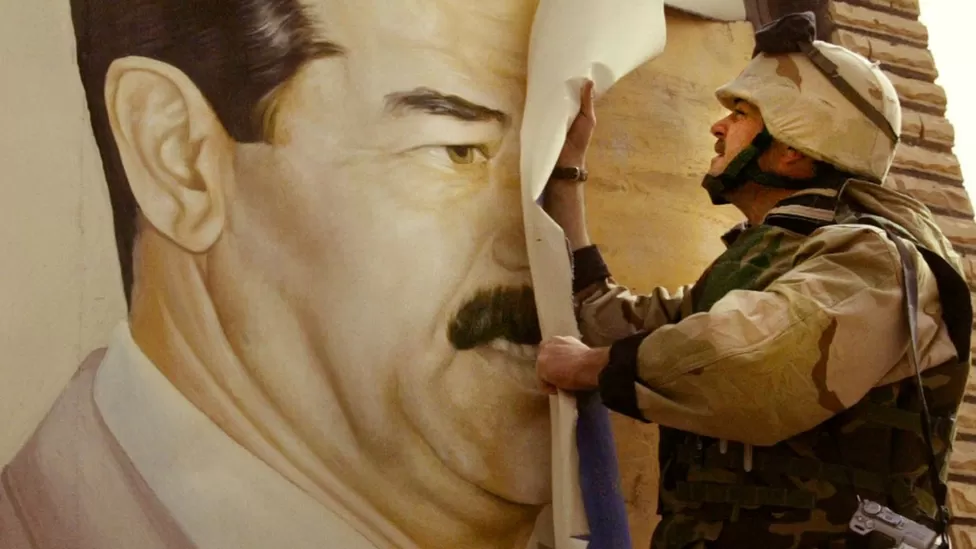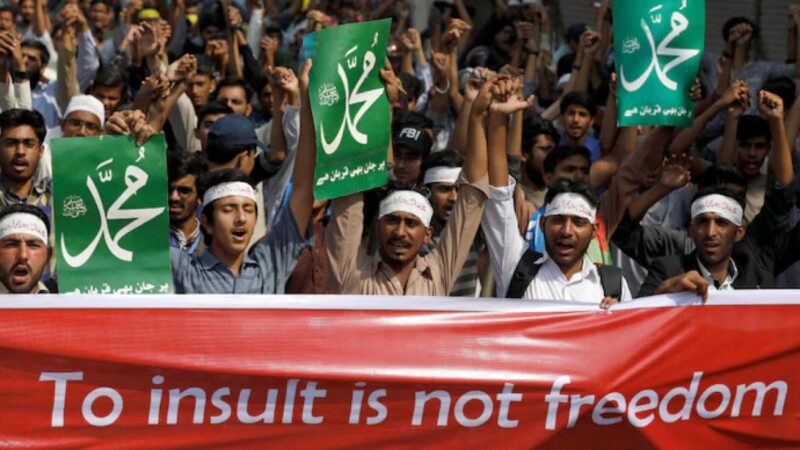Twenty years ago, why did the US and its partners attack Iraq?

US and allies troops attacked Iraq on March 20, 2003, overthrowing Saddam Hussein’s government.
Most nations declined to back military action against Iraq despite US claims that it posed a danger to world order and had WMD.
What motivated the US to attack Iraq?
The US commanded an international alliance in the Gulf War of 1990–1991 that drove Iraqi troops out of Kuwait.
Following that, the UN Security Council adopted Resolution 687 directing Iraq to eliminate all of its weapons of mass destruction (WMDs), which include long-range ballistic rockets, biological, chemical, and nuclear weapons.
When Iraq stopped working with UN weapons inspectors in 1998, the US and the UK retaliated with airstrikes.
President George W. Bush’s government began preparing for the invasion of Iraq after al-Qaeda attacked the Pentagon in Washington and the World Trade Center in New York on September 11, 2001.
According to President Bush, Saddam continues to store and produce WMDs, and Iraq, along with Iran and North Korea, is a member of the global “axis of evil.”
The US Congress gave its approval for the use of armed action against Iraq in October 2002.
According to Dr. Leslie Vinjamuri, head of the US and Americas Programme at Chatham House, a London-based think firm focused on international relations, “many people in Washington believed that there was significant evidence that Iraq had weapons of mass destruction and that it posed a genuine threat.”
The UN Security Council was requested to approve military action against Iraq in February 2003 by Colin Powell, the US Secretary of State at the time. Powell claimed that Iraq was in violation of earlier decisions with its supposed WMD program.
He failed to convince the Council, though. The majority of its members favored continuing the work of UN and International Energy Authority weapons investigators who had visited Iraq in 2002 to look for signs of WMDs.
The US gathered a “coalition of the willing” to fight Iraq, declaring that it would not wait for the inspectors to submit their findings.
Who advocated for the war?
The UK, Australia, and Poland were three of the coalition’s thirty member nations that took part in the attack.
Australia sent 2,000 soldiers, the UK sent 45,000 troops, and Poland sent 194 men of its special forces.
Kuwait permitted the assault to start from its soil.
Along with other countries in the “Vilnius Group,” which claimed that Iraq was developing WMD and was breaking UN decisions, Spain and Italy provided political backing to the US-led alliance.
What claims were made against Iraq by the US and the UK?
When speaking to the UN in 2003, US Secretary of State Colin Powell claimed that Iraq had “mobile labs” for creating deadly weapons.
He did admit, however, that the proof “appears not to be… that solid” in 2004.
According to an intelligence report made public by the UK government, Iraqi rockets could be prepared to strike UK targets in the eastern Mediterranean in less than 45 minutes.
Tony Blair, the prime minister of the UK at the time, declared that Saddam Hussein’s continued production of WMD was “beyond doubt.”
The assertions of two Iraqi defectors, a chemical engineer named Rafid Ahmed Alwan al-Janabi and an intelligence officer named Maj Muhammad Harith, who claimed to have first-hand knowledge of Iraq’s WMD program, were highly depended upon by the two nations.
Later, both men admitted that they had made up their proof in order to get the allies to attack and overthrow Saddam.
Who objected to the war’s funding?
Canada and Mexico, two US neighbors, declined to back it.
Two important US partners in Europe, Germany and France, also declined to lend a hand.
Military action, according to French Foreign Minister Dominique de Villepin, would be “the worst possible solution.”
The US and partners were not permitted to use Turkey’s airbases because it is a fellow NATO member and Iraq’s neighbor.
Saudi Arabia, for example, did not support the US attack of Iraq in 2003 despite having backed the US against Iraq during the 1990–1991 Gulf War.
Middle Eastern supporters and opponents of the Iraq War are depicted on a map.
According to Professor Gilbert Achcar, a specialist in Middle Eastern affairs at University of London SOAS, “the Gulf Arab states thought the plan was crazy.”
They were concerned that Iran would take charge of Iraq after Saddam’s government fell.
What took place during the war?
On March 20, 2003, at daybreak, 295,000 US and allies forces invaded Iraq across its boundary with Kuwait as part of Operation Iraqi Freedom.
In the country’s north, 70,000 members of the Kurdish Peshmerga group engaged in combat with Iraqi troops.
By May, the Iraqi forces had been routed, and the government had fallen. Later, Saddam Hussein was apprehended, convicted, and killed.
However, Iraq was not discovered to contain any WMD.
A extremist uprising overwhelmed the nation in 2004. Later, a civil conflict between the Sunni and Shi’a Muslim groups in Iraq erupted.
In 2011, US forces evacuated from Iraq.
According to estimates, the conflict cost the US $3 trillion and caused 461,000 deaths in Iraq between 2003 and 2011.
According to Dr. Karin von Hippel, director-general of the Royal United Services Institute think firm, “America lost a lot of credibility from this war.”
Twenty years later, you can still hear individuals asking, “Why do we want to believe American intelligence?”
gray presentation line






